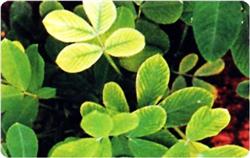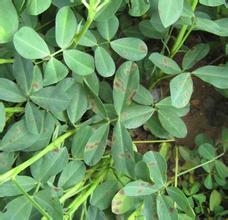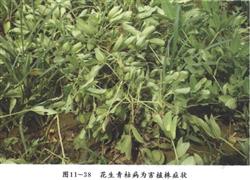Pest Control in Peanut growth

Grubs are the larvae of beetles, commonly known as "old mother worms". The main harmful species of crops are dark Gill golden turtle, copper green golden turtle, hairy golden turtle, black velvet golden turtle and so on, among which dark Gill golden turtle and copper green golden turtle are the most common, and the harm is serious, so they are the dominant populations in grubs. Adults like to eat peanuts and soybean leaves, as well as poplar, willow, elm, locust and other leaves. Dark Gill beetles lay eggs from early July to late July, while copper green beetles lay eggs from mid-June to mid-July. In the control measures, the control strategy of the combination of adult control and larva control, sowing date and growth period, artificial capture of adults and pesticide control were adopted to eliminate grubs before damage. Agricultural prevention and control: 1, intensive cultivation, deep ploughing fine rake, mechanical insecticidal. 2. Fertilize reasonably and use mature organic manure. 3. Timely watering will affect the hatching of eggs and the survival of young larvae when the soil water content is saturated. 4. Remove weeds and pick up larvae with ploughing. Chemical control: 1. Chemical treatment of soil and seed dressing with chemicals during sowing period. 2. In the adult stage, kung fu, enemy killing and highly effective compound insecticide spraying can be used to kill the adult, or tree strips can be impregnated with pesticides to kill the adults. 3. During the growing period, 3% isocarbophos or carbofuran granules can be used, mixed with fine soil, scattered around the plant, combined with hoeing and buried in the soil, the closer the agent is to the root, the better the effect. It can also be poured around peanuts harmed by grubs with 48% Lexben EC 200mur250 milliliters and water 200mur250 liters, which is a good remedy.
- Prev

Prevention and Control of Peanut net spot
Peanut net spot, also known as brown spot and moire spot, often occurs mixed with leaf spot, which can cause early peanut leaf shedding and seriously affect peanut yield. The main results are as follows: first, the regular diseases begin to occur at the flowering stage, and the peak period is from podding to maturity, which mainly harms the leaves and produces round or irregular shapes along the main vein.
- Next

Control techniques of Peanut bacterial Wilt and Stem Rot
First, peanut bacterial wilt 1, symptoms. The disease of peanut bacterial wilt began to occur before and after flowering, but the disease was the most serious at the stage of flowering and needling, and the disease was alleviated after podding. The biggest symptoms are as follows: the upper leaves of the diseased plant withered rapidly, the vascular bundles of the underground roots turned brown, the longitudinal rhizomes, and the squeezed incisions were permeable when it was wet.
Related
- The first cup of black tea in spring, the flavor and history of tea gardens in Kenya, Africa
- The computer can not only choose potatoes, but also grow tea rice. AI will grow winter oolong tea champion.
- It is not only the inflated tea bitten by insects, but also engraved with the four seasons tea in Beipu.
- The Oriental Beauty Tea Festival in Zhuxian County takes the stage at the weekend to experience the plus-size feast of oil tea.
- & quot; Oriental Beauty Tea & Exploration of Emei in Hsinchu, the hometown of quot;
- The new variety of strawberry "Tainong 1" dessert is the first choice with mellow aroma. Crimson gorgeous
- History of Tea in Taiwan: from Wild Inner Mountain to Export Tea Garden
- Two types of Taiwan Oriental Beauty Black Tea won the British three-Star Award for Childhood Tea Xiang Zhang Jiaqi changed from pilot to champion tea maker.
- Banana species and varieties: the planting history of Taiwan Xianren banana and dwarf banana is long, is banana disease resistant?
- Coffee planting Technology: Qianjie Coffee from Seedling to harvesting

